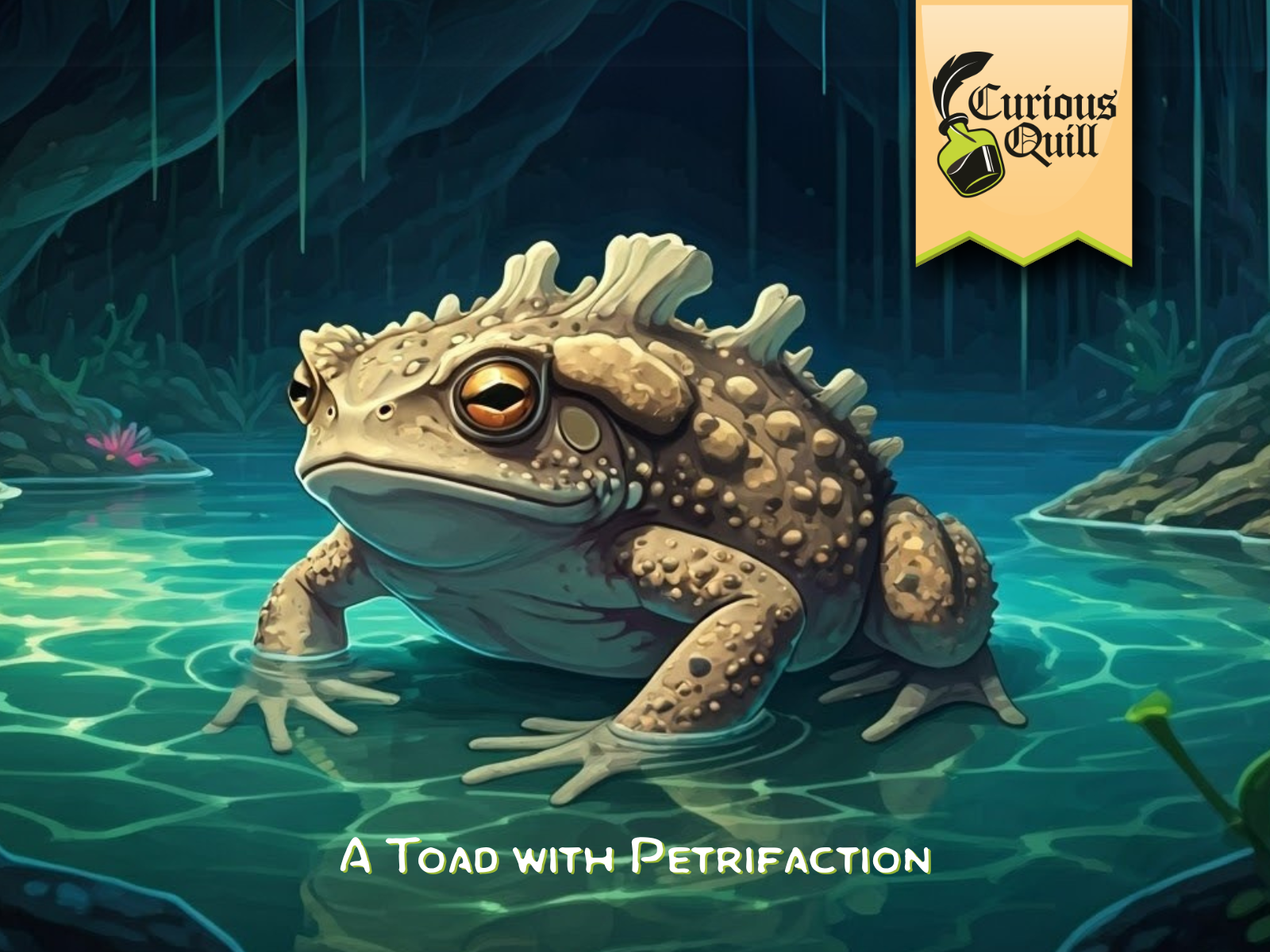Bestiary: Grymbeasts
Grymbeasts, also known as gryms or dire beasts in some cultures, are beasts that have been infected with a magical disease called petrifaction, which causes them to grow bony protrusions, or knurs. These knurs can form ridges and spikes that act as bony armor and can also be used to attack. A grymwolf, also known as the direwolf, is an example of a grym and hook horrors are examples of extreme, advanced phases of petrifaction.
Most grymbeasts are diseased animals that contracted an illness called petrifaction. While the disease is not normally known to affect mortals, it transforms the infected beasts into monstrous variants. In the Baest Notera, Sylvfar postulates that the source of petrifaction is a potion brewed by hags in their cauldrons, using ingredients such as the lungs of a gorgon or the eyes of a basilisk or medusa (a type of hag) who willingly sacrifices an eye. The concoction is intended to create guardians, but if these guardians escape or are deliberately unleashed, they can spread the disease, causing other beasts to become knurled.
When referring to individual knurled and to describe the beast they are twisted from, a knurled creature uses Grym- as a prefix so a knurled rat is a Grymrat and a malefic wolf is a Grymwolf.
Grymbeasts are often mistaken as undead beasts due to their appearance. Their bony growths can manifest as an exoskeleton that looks like they themselves are skeletal or at least parts of their flesh has decayed to expose their bones.
An example of a grymbeast that may be mistake for an undead beast
Petrifaction
Beasts afflicted with Petrifaction will develop bony growths in phases, depending on the duration of the disease. Initially, armor-like growths appear on the skin, bones thicken and become denser, and teeth and claws elongate and strengthen. Over time, these growths shield them from all environmental harm, and their natural weapons become increasingly lethal. However, as the growths develop and the skeleton hardens, movement becomes difficult and they slow down.
Adamantine is known to combat petrifaction. A knurled monster is vulnerable to damage from adamantine weapons and it provides resistance to their attacks.
5e Petrifaction Rules: Building a Grymbeast
There are a few monsters that work as Grymbeasts in 5e including the aforementioned dire wolf and hook horror. Using some creativity and your imagination, you can use other monsters’ stat block to represent a grymbeast of your choice of original fauna, for example the stat blocks of an owlbear or bulette could represent different phases of grymbear petrifaction (or other large predator like a lion or tiger).
An easy way to create an original grymbeast in 5e is to add traits to a regular beast.
Phase I - resistance to bludgeoning, piercing, slashing damage; and increase damage by 1 die
Phase II - choose between: resistance to All damage except force, psychic, radiant; or Phase I plus natural weaponry increase by another 1 die damage; AND halve Speed and Jump distance
Phase III - develop the other from Phase II that they had not already, and Speed reduces to 10’ max and cannot Dash or Jump
Phase IV - become petrified


